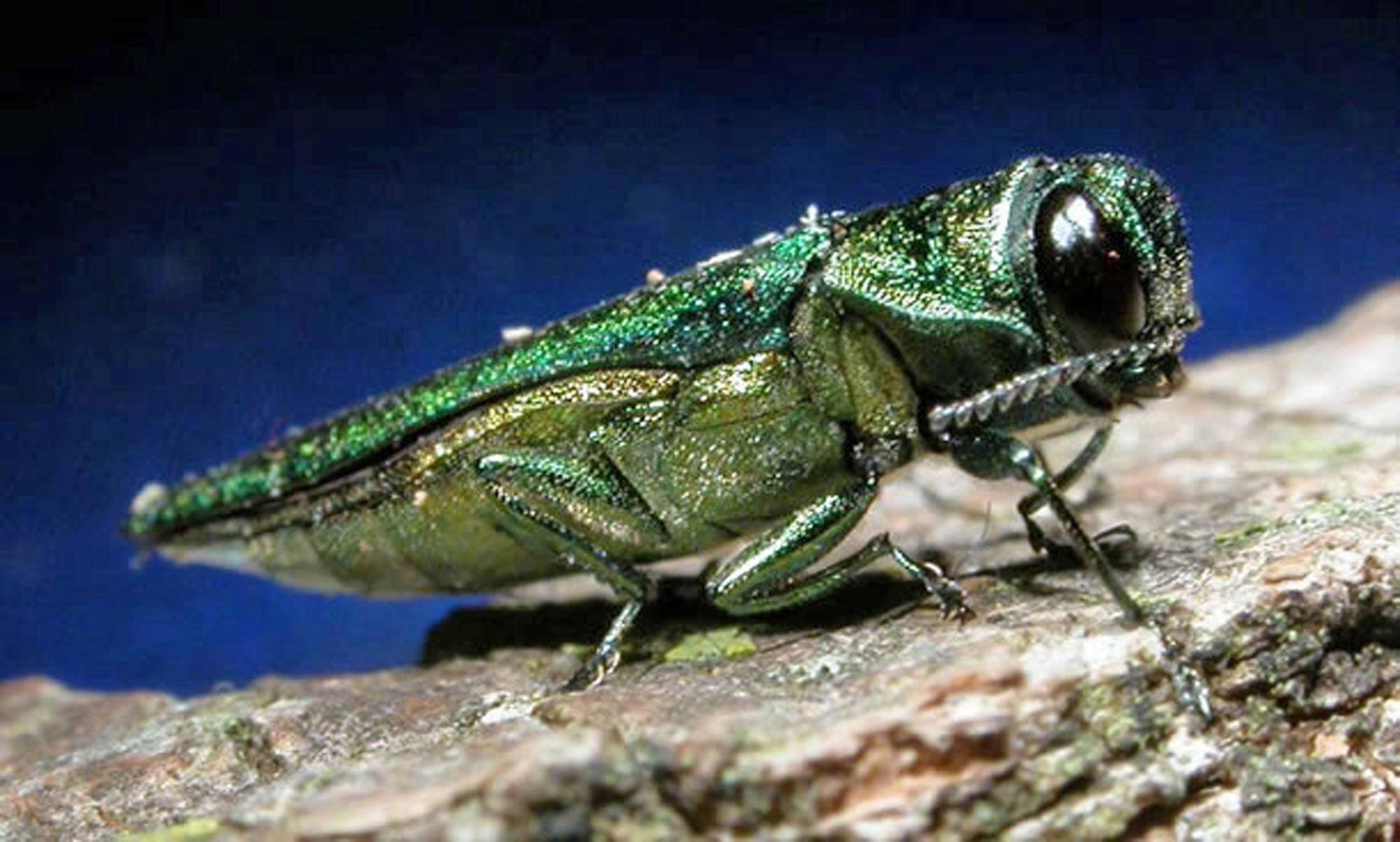
The Emerald Ash Borer, which attacks and kills Ash trees, has found its way out of Boulder County. In the last several months, it’s appeared in Broomfield, Westminster and Berthoud.
The pest’s unwelcome Colorado debut in 2013 prompted a quarantine that blocked the movement of firewood or other wood supplies across Boulder County borders — but it was never meant to contain the invasive species.
The main goal was to try and slow things down as best and give cities time to prepare said Laura Potorff, plant health section chief at the Colorado Department of Agriculture.
“We spent a lot of time communicating with the city foresters and advising how they may want to start planning to deal with something that is inevitable,” she said.
Inevitability is just part of the Emerald Ash Borer’s modus operandi. When it bores into an ash tree, that tree will die. There’s nothing that can be done to save it. And when it arrives in a place, detection is about three years behind. That means that it could be destroying ash trees and infesting urban forests all along the Front Range for years before city forestry officials are even aware of its presence.
“We cannot stop those adult beetles from moving from one tree to another. And so it will slowly spread across the Front Range — fast or slow, we don't know — but it will spread,” Potorff said.
So has the fight against the pest been futile? Not necessarily, Potorff said.
“A lot of the cities like Boulder, Longmont, Denver, even Broomfield and Westminster, they have been preparing and planning for this,” she said.
Sara Davis, Denver’s urban forestry program manager, said the city has taken advantage of the time and implemented their plan four years ago.
Her department has removed ash trees in poor condition throughout the city’s park system and replaced them with other tree species. It has also treated some ash with pesticides to protect against the pest.
And while Davis knows the threat the borer presents, she’s not afraid for Denver’s 330,000 ash trees.
“I think we’ve been worrying about it for so long, that we’re ready for it to just happen already,” she said.
In some ways, this issue is one of Colorado’s own making. The ash tree isn’t native to the Front Range and the mountains.
“We humans, we have planted it in our urban landscapes. It's not a component of our native forest,” Potorff said.
The mountains have acted as a natural barrier for the spread of the pest. But when the quarantine is effectively lifted at the end of the year, the Emerald Ash Borer could find a ride over the Rockies in firewood — the same way that officials think it found its way here in the first place.
“When we identified it first in 2013 in Boulder, the closest known area of infestation was in Kansas City, Missouri. Since it can only fly a half mile a year, it was inconceivable that it had been able to fly across the Great Plains,” Potorff said.
There are two main reasons the restrictions are being eliminated. First, it served its purpose to delay the spread and allow time for other cities to plan. It was also a matter of economics.
“When you are restricting the movement of wood, you are restricting where that wood may be recycled or you may be restricting where that wood may be going to a landfill. And that was causing economic hardship for cities in Boulder County,” Potorff said.
Now, the state agriculture department just hopes the message about how to handle the spread of Emerald Ash Borer has made an impression on cities and residents with ash trees on their property.
Now the only question many cities have is what to do with all the ash tree debris.
In Denver, Davis said her department is trying to find ways to get the wood into the hands of craftspeople or industries that can turn the wood into something useful.








